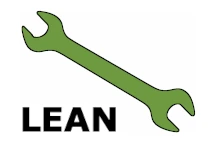
What is Continuous Flow
Continuous Flow is a situation where work in process smoothly flows through the process steps with minimal or no inventory between different stations.
Why Continuous Flow
General advantages
- Makes problems visible
Reduces waste types
When to use Continuous Flow
Essential conditions
KPIs
KPIs are required to be able to understand the numbers (e.g., Cycle Time and Takt Time)
Non-essential conditions
Layout Planning
Picking the right layout makes it easier to attain flow
How to implement and use Continuous Flow
Implementation
Continuous Flow can be achieved when the following situation is present in the process:
Cycle Time = Takt Time
If the cycle time is slower than the takt time, delivery is too late. However, if it is faster then there is a risk of overproduction
Use
In practice:
- Cycle Time may be slightly less than Takt Time to make it cope better with reality (dynamic demand, downtime, sickness).
- Make Cycle Time more flexible by enabling variation of workload (adding/removing several operators/machines).
Where to find it
IASSC Body of Knowledge:
Lean: 11
Yellow ➔ Understand
Green ➔ Analyze
Black ➔ Create
Lean Six Sigma: 1.4.1
Yellow ➔ Apply
Green ➔ Apply
Black ➔ Apply
Lean tools are great. Results are better.
Take the next step with Procestimal — expert-designed modules that help you apply Lean with real-world impact.
Try it free for 30 days — no credit card, no pressure.
About the Author
Floris Lap is an IASSC-certified Lean Six Sigma Black Belt and founder of Procestimal. He empowers organizations to maximize value and reduce waste through practical Lean Six Sigma solutions—contributing to a more sustainable world where businesses thrive with minimal resources. Contact us
Last updated on:
